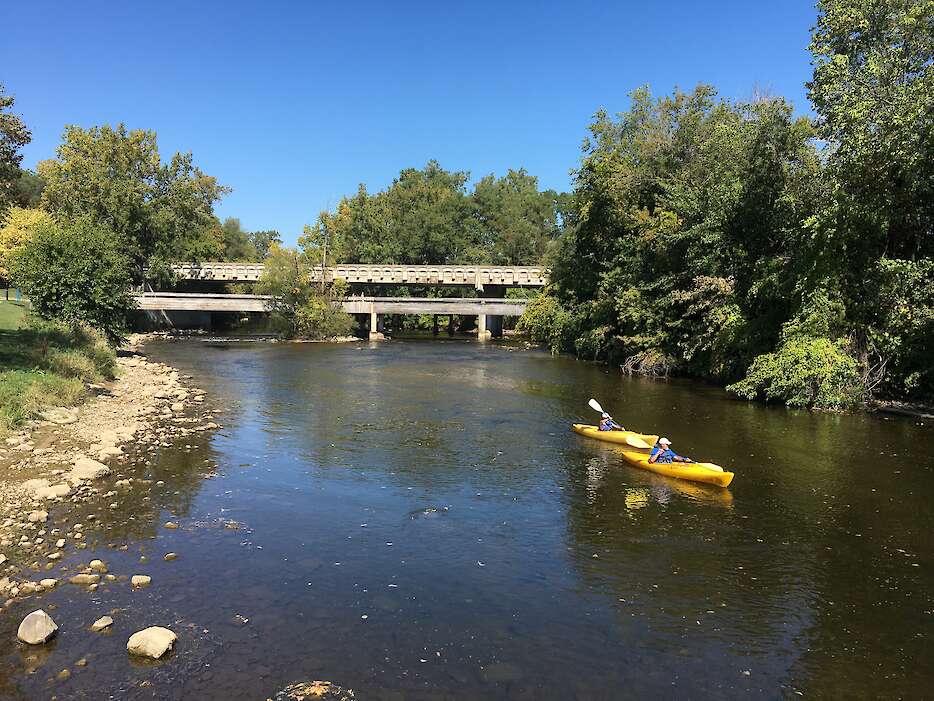"Forever Chemicals" in the Huron River

A warning to the public about PFAS in fish.
Per- and Polyfluorinated Substances (PFAS) are toxic synthetic chemicals that don’t break down readily in the environment. Because they last so long, they are known as “forever chemicals.” In 2018, the Michigan Department of Health and Human Services issued a “Do Not Eat Fish” advisory due to PFAS contamination for nearly the entirety of Huron River’s main branch. State government investigations initially found a chrome plating company responsible for the PFAS, but then more and more sources were located.
We know now that PFAS contamination is pervasive throughout the environment and that it will be with us for a very long time. It remains unclear when the Huron River’s problems will be resolved, because even as existing pollution is flushed from the river and diluted, new and existing sources continue to discharge PFAS into the river. PFAS was not measured in this report card because there is not yet sufficient data, but PFAS is an issue that requires attention now and into the future.
Learn more about PFAS from the Huron River Watershed Council at https://www.hrwc.org/pfas.
Are PFAs an issue while swimming?
No. PFAS are far less toxic through skin exposure, and the concentrations found in the Huron River are not a concern. The occasional accidental gulp of calm lake or river water is okay, though consuming raw river water should be avoided due to various health risks. PFAS do collect at very high concentrations in foamy water, so avoid contact with river foam, and be sure to avoid accidentally ingesting foam.
The Huron River Water Trail shares the benefits of conservation and restoration with the community

Kayakers enjoy the river.
The Huron was designated as the 18th trail of the National Water Trail System in 2015, joining a network of exemplary nationwide water trails. The Huron River Water Trail is a 104-mile inland paddling trail that connects people to the river’s natural environment, its history, and the communities it touches. A broad group of public and private partners support the water trail with projects that improve launches and dam portages, wayfinding signs, a waterproof map book for paddlers, and an online trip planning tool. Half a dozen outfitters, including the busiest livery operation in Michigan, offer paddling equipment for rent along with transportation. An extensive network of parks, greenways with trails for walkers and bicyclists, and five trail towns provide water trail access and opportunities for recreation and enjoyment.
